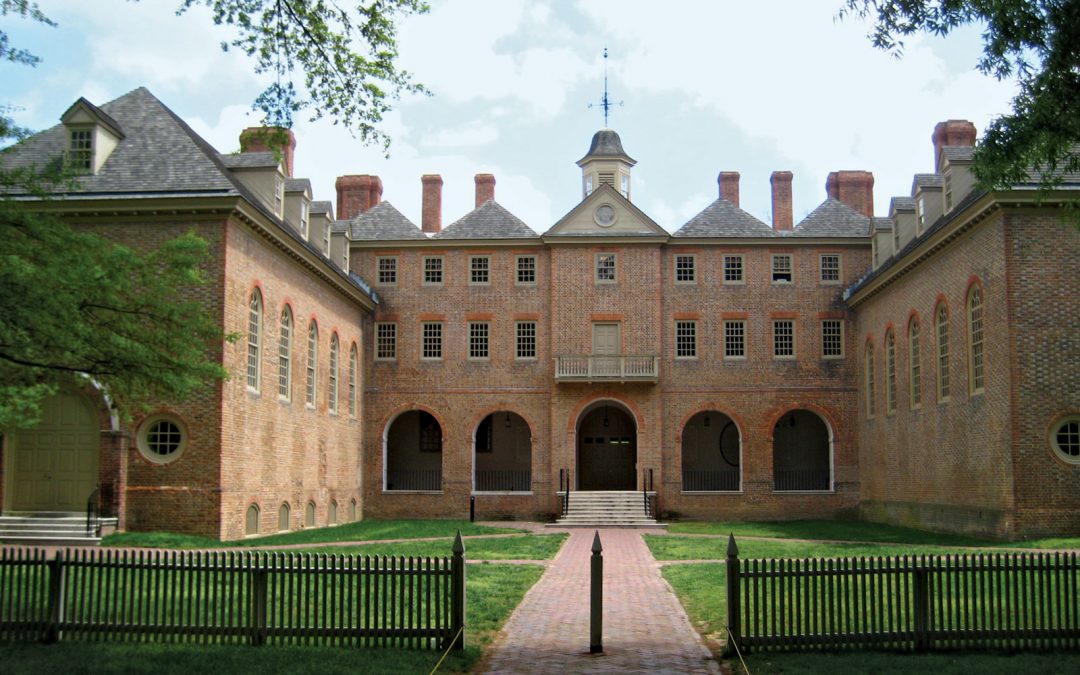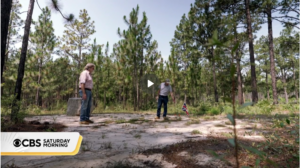The College of William & Mary’s historic campus — with all the complicated legacies it entails — serves as a microcosm of a larger national reckoning about when and how to leave behind symbols associated with the country’s history of racism and slaveholding.
The university, like other schools and cities across the nation, has begun a process of renaming and contextualizing buildings and monuments linked to slaveholders and Confederate figures.
The history of the university, chartered in 1693, mirrors the history of the country in many ways, John Littel, rector of W&M, said in a phone interview.
“A lot of the hopes … and a lot of the not-so-good parts, are part and parcel of our own (national) history,” he said, and the school’s integral role in how the country was founded is “one of the things we treasure about William & Mary.”
“This conversation about naming, our campus, how we present and project ourselves to people, is just a small part of” the lengthy reckoning process W&M has been undergoing for some decades now, Littel added.
Part of that process comes down to the diversity of the student body and faculty over time, said Fanchon Glover, chief diversity officer.
The university, now 328 years old, first admitted white women to campus in 1918. The first Asian student was admitted in 1921. The first Black student enrolled in 1951, but the first Black students to live on campus didn’t arrive until 1967.

When Glover arrived at the university, working in the multicultural affairs part of the student affairs division in 1996, people of color made up only 17% of the student body. Now, she said, it’s closer to 30%.
“It has made a tremendous difference for the entire campus,” Glover said. As more students from diverse backgrounds join the university, the conversation in classrooms and around the student experience shifts, bringing attention to how it feels to exist on campus as a member of those groups, she said.
That gave weight to other initiatives, such as the Lemon Project.
Begun in 2009 and named for Lemon, an enslaved man once owned by the university, the project aims to research and “rectify wrongs perpetrated against African Americans by William & Mary through action or inaction.” Littel, and the school’s website, credit the project to student and faculty calls for action.
Since its founding in 2009, the Lemon Project has uncovered the names of enslaved people owned by the college and information about their lived experiences, helped revise W&M courses to better reflect research findings, and laid the groundwork for the Memorial to the Enslaved.

Littel described it as “the cornerstone of our modern history and understanding of race at William & Mary.”
“It helped us become more aware of our history,” he said, reflecting on the changes the Lemon Project made possible. When it started in 2009, Littel said, all the university was equipped to do was acknowledge its role in the history of slavery and segregation. In 2019, William & Mary formally apologized for that role.
“Even just going and listing the names of the 188 people we know were enslaved” by the university provided important information and context that was left out for almost 300 years, he said. “Some of that is shedding light on our history, and that’s really important for your present and your future.”
In 2015, the school removed a plaque with the Confederate flag from the Wren building and decided to refashion a ceremonial mace to remove Confederate symbols from it. Former President Taylor Reveley also created a Task Force on Race and Race Relations, which Glover chaired.
“In society (at the time), there were a number of murders of African American men, and it brought race to the center of the conversation,” Glover said. In response, after calls from students, the task force was charged with examining the racial climate on campus and ways to address those issues.
Its final report, put out in 2016, recommended changes ranging from increased diversity among students and faculty, to naming “important and prominent campus buildings to more fully reflect the diversity and achievement of the entire William & Mary community.”
Student calls for action continued, and in June 2020, in the wake of the deaths of Ahmaud Arbery, Breonna Taylor and George Floyd at the hands of police officers, W&M devised the Principles of Naming and Renaming Working Group, Glover said.

Renaming in 2020
The working group’s goal was to “develop principles on the naming and renaming of buildings, spaces and structures at William & Mary,” come up with guidance for adding context to campus landmarks that would not be renamed, and to serve as an adviser to President Katherine Rowe.
The efforts of that temporary group resulted in guidelines for a more permanent body within the Board of Visitors, which will make recommendations to the president for final naming or renaming decisions going forward.
“Going forward, we want to be a lot more consistent about how we not only name things, but how we record the history so that people understand it,” Littel said. “We really want to do this in a way that’s really deliberative and based on research.”
In September, the group put forth their “Design Imperatives and Principles.” The guidelines promise that changes will be made only after thorough research to educate and affirm the complexity of the school’s history and its values and to promote “honest and clear self-reflection.”
For some buildings, statues or other icons, those guidelines might suggest removing or renaming the thing in question, as the school did with the Confederate plaque in the Wren Building. For others, it might mean adding historical context, so that the item or name is not simply taken at face value, as Littel said had already occurred with portraits of Founding Fathers in the Wren Building.
Student Shane Moran, a senior, has been involved in that contextualization process. Moran leads a Student Assembly committee that aims to add signs or barcodes that can be used with smartphones to all buildings and statues with information reflecting all parts of campus history.
Also in September, W&M renamed Trinkle Hall, which had been named for a former Virginia governor who signed “some of the most pernicious Jim Crow laws in Virginia history,” according to the renaming resolution. Now it is called Unity Hall.
Maury Hall, on the Virginia Institute of Marine Science’s Gloucester Point campus — originally named for the so-called “father of modern oceanography” who resigned from the U.S. Navy to join the Confederacy — was renamed York River Hall.
The working group presented its final report to Rowe on Feb. 22.
“I think she received the report very well,” said Glover, also a member of the working group.

At those Feb. 25 and 26 meetings, Rowe took the guidelines of the working group into account and recommended three more locations on campus as candidates for renaming: Morton Hall, Taliaferro Hall and Cary Field.
She prioritized five individuals for consideration, should buildings be renamed. They included Art Matsu, member of the football team and one of the school’s first Asian-American students; Hulon Willis Sr., the school’s first Black graduate; John Boswell, distinguished author and scholar; and honorary degree recipients John Lewis, congressman and civil rights activist, and Katherine Johnson, NASA Langley mathematician.
In that final report, the working group also recommended the creation of a permanent entity to deal with these kinds of issues. Rowe and the Board of Visitors decided that the board’s Design Review Board, already in charge of the long-term campus master plan, will fulfill that purpose and “institutionalize naming and renaming,” according to Littel.
The Design Review Board is taking Rowe’s suggested three locations and five individuals into consideration and will decide on actions at the April meetings.
A February memo to Littel from Rowe laid out next steps in the renaming process, including contextualizing commemorations of Thomas Jefferson, James Monroe and Benjamin Stoddard Ewell, a Confederate army officer and the 16th president of W&M who reopened the school with his own funds after the Civil War. They hope to complete research on other opportunities by August.
“We want our university to be as welcoming as it can be to as many people, and in particular, create a sense of belonging for the people that come here,” Littel said. “Our campus and our campus community is reflective of both our commonwealth and our nation.”
As Moran put it, renaming buildings isn’t the ultimate “moral issue” when it comes to tackling systemic racism on campus, but it is an important step to take.
“(Renaming) is an issue of respect, in considering what W&M wants in the future, what it wants its students of color to think it wants for them,” he said. “It says something about our morals, but it isn’t the moral action.”
Maggie More, 757-446-2305, mmore@virginiamedia.com
More online
Read the previous story on how William & Mary students are pushing for change amid a national racial reckoning at tinyurl.com/vagazette.
–dailypress.com



